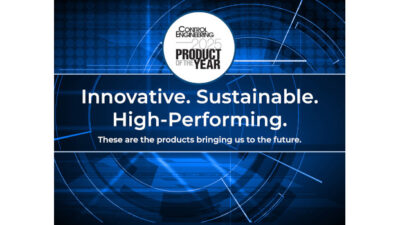Simple but effective liquid level measurement requires only a pressure gage and compressed air supply. This method is ideal for slurries and difficult debris-laden products.
|
Hands-on bubbler demonstration
|
Using pressure to measure liquid level is not complicated ( as shown in an earlier video tutorial ), but it does require that you make a penetration into the vessel somewhere near the bottom. If you need to make a level measurement from the top, you’ll need to use a different method. One approach that is simple but very effective is a bubbler, sometimes called a dip tube. ( Watch the video .)
The concept is very straightforward: If you insert a tube into a vessel and pump compressed air into the tube, if there is enough pressure, it will push the liquid out of the tube and bubble out the bottom. It’s just like blowing on a straw in a glass of water. The amount of pressure required to displace the liquid will vary according to the liquid depth: more liquid means more pressure. If you bring the air pressure up slowly and measure it as you go, the pressure will
|
Pressure needed to displace liquid depends on depth
|
|
Deeper liquid requires higher pressure
|
increase but then level when air comes out the bottom of the tube.
This pressure measurement allows you to calculate the distance from the bottom of the tube to the liquid level. If the pressure gage reads in inches of water column (as it does in the video), the task is really easy assuming the density of the liquid is the same as water. If your device reads in psi, 1 psi is equal to 27.7 inches of water so the math isn’t very complicated. The density calculation is similarly straightforward.
One element that makes this approach so versatile is that fact that it uses access from the top, but measures from the bottom. This is in contrast to technologies like radar or magnetostrictive probes that actually measure the space above the liquid. If your dip tube is long enough to reach the bottom of the tank, you will get the true depth reading even if you don’t know exactly where the bottom is. This makes it particularly useful for those occasional applications where you need to know the depth but you may not have all the dimensional data readily accessible.
This approach is very useful in situations where there is debris in the liquid or other solids that might interfere with floats or other moving parts. The tube tends to be self clearing since air keeps liquid out. Even if you only check intermittently, as long as the air pressure is high enough to displace any debris with the liquid, it will work properly.
At the same time, this approach does have some drawbacks:
• It does consume compressed air, but the volume can be very low (just enough to bubble out the bottom) and it can be shut off between intermittent readings.
• The tank needs to be vented. You could probably work out a differential pressure approach to measure a sealed tank, but the compressed air would simply accumulate in the tank and raise the pressure. Moreover, there would be a potential safety issue. If the pressure in the tank rose sufficiently, it could drive liquid back through the air line.
• The liquid must be able to tolerate having air (or whatever compressed gas you use) bubble through it and dissolve. It must also withstand possible contamination carried in the air stream. Products that deteriorate through oxidation would be a poor choice.
Using a bubbler is a very simple approach for continuous depth measurement that can be precise and is still inexpensive. The main cost is for a pressure gage and the compressed air itself. If you need a precise measurement and want the ability to interface with a larger control system, an electronic device will be appropriate. On the other hand, a simple analog gage can also do the job.
Read more about choosing level sensing technologies .
-Peter Welander, process industries editor, [email protected]
Control Engineering Process Instrumentation & Sensors Monthly eNewsletter
Register here to select your choice of free eNewsletters .



